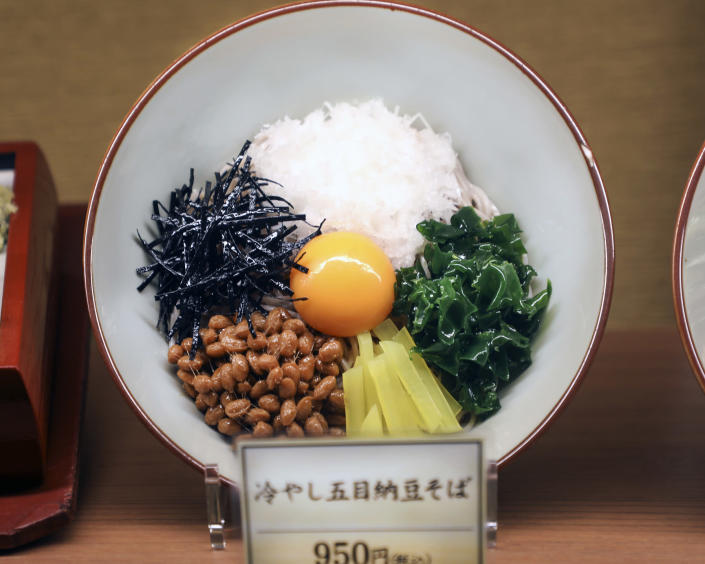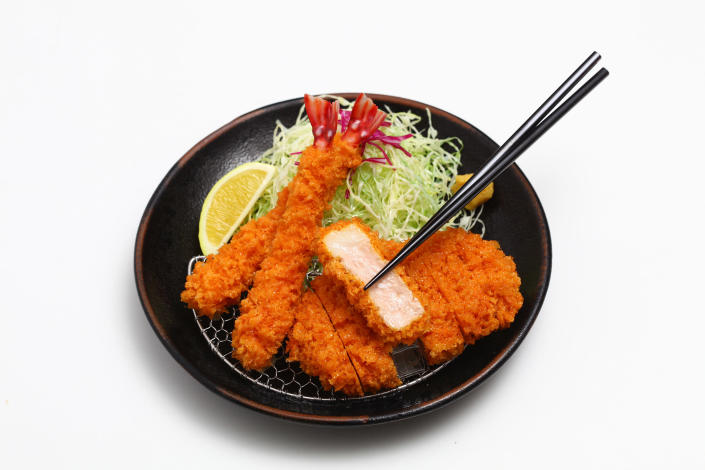Look, but really don’t try to eat.
That is the finest way to eat the bountiful shows the likes of nigiri, curry and tempura shown in the windows and at tables of so several casual eating Japanese dining places. Recognized in Japan as “shokuhin sampuru” (食品サンプル), food types are usually designed of plastic or wax and emulate the look, texture and variety of meals. They were first made use of by dining establishments in the days before shade images as a way to show buyers what products were available on hand.

Today, their functionality has progressed into a lot more of an artwork sort. In the streets of Japan and those belonging to diasporic communities outdoors of the nation, you are going to discover sampuru beckoning probable diners inside of eateries and stores. The pretend and glistening delights also provide as vacation keepsakes as nicely as ephemera of time gone by.
Like the finest of foods-related innovations, quite a few have laid declare to staying the original masterminds of food items products.
In an job interview with Today Food items, Samuel H. Yamashita, a professor of Historical past at Pomona Higher education with skills in Japanese and Pacific Rim cuisines, said the culinary historical past of sampuru has 3 different origin theories.

“One idea is that they originated in Kyoto in 1917, and they were being invented by a person named Soujiro Nishio,” Yamashita spelled out, introducing that the craftsman experienced been an staff of the Shimazu Company, a manufacturer that made plant styles.

Nishio is claimed to have made the very first foods products in November 1917 and at some point fashioned Nishio Manufacturing Enterprise, which made the to start with foods types. According to legend, it was not till a section keep in Okayama solicited Nishio for foods replicas that the products truly took off.
An additional idea credits Shirokiya Office Keep, the 1st Japanese department retail store to have a cafeteria that includes the waxy delights. The historic division retail store dates as considerably again as 1662, but it wasn’t till about 200 years afterwards that exhibiting the items on their menus would grow to be component of the store’s promoting technique.

“They had the plan to show a serving of each individual dish,” an write-up on sampuru released by Tofugu, a Japanese culture and language site clarifies. “But authentic foodstuff could draw in bugs and get sad-hunting in other strategies by the close of the day, and producing the food stuff and throwing it away every single working day was not without the need of expenditure.” With this dilemma, the section retailer tapped Tsutomu Sudo, an anatomical maker of human entire body parts and animals.

A 3rd principle cites Takizo Iwasaki, a person who ran a bento store in Osaka, as turning into the initial sampuru maker. According to Yamashita, Iwasaki produced bento lunches and, following a bit of demo and error, created a model of an omelet that was so real looking when he showed it to his spouse, she wasn’t able to explain to the fluffy egg dish from the serious detail.
Recognized these days as the “father of the faux foods design market,” Iwasaki’s company — formerly the Iwasaki Group, now acknowledged as Iwasaki Be-I — is stated to account for 60% of today’s Japanese sampuru market.

Individuals very first types were produced of wax, but today’s styles are manufactured of plastic.
While the valuation of sampuru is large, most of its brands nonetheless largely tailor made-make the designs by hand. The handcrafted method of the meals products is one particular of moment depth and artisanship.
A restaurant soliciting replicas of its menu things will commonly freeze their dishes so that a producer can start the process of making a casting mold.
For its technique to setting up replica meals, Iwasaki Be-I states on its web site that it follows a “not greatly known” step-by-move system. Starting off with the development of a mould made by duplicating the tough surfaces of meals, the company then little by little fills the mould with silicone and a coloured resin. Soon after heartening the substance in an oven, the silicone is taken out from the design and then painted with airbrushes and paintbrushes.
It doesn’t conclusion there, however. Following all, the critical to any dish is presentation. Regardless of whether it’s how your facet of fries will be put together with a burger stacked superior with toppings, or the lacquered search of unagi over a bowl of rice, food items types are established in a way to duplicate how a dish will be served.

Beyond whetting appetites, foodstuff models have also fostered cultural trade and expansion all around the entire world.
In an job interview with Now, Seigo Kozakai, the CEO of Iwasaki Mokei (not to be bewildered with Iwasaki Be-I) underlined the affect sampuru has had in aiding culinary enlargement and collaboration all around the globe. “Sampurus grew proportionally to the progress and improvement of Japanese restaurants,” Kozakai remarked. “After the 1940s, when Western meals society arrived to Japan, these sampurus gave visible reassurance to the Japanese people who had not witnessed many of these dishes in advance of. Considering the fact that then, it was acknowledged that sampurus were being efficient and grew to become what is regarded nowadays.”

Outside of broadening American palates, sampuru has played a important section in imparting an comprehension of meals as an art form in alone. A 1985 post printed in the New York Times described sampuru as an instance of a “pure Tokyo design and style of regular craftsmanship” that experienced fascinated the artwork world so considerably that it was provided in an exhibition at London’s Victoria and Albert Museum. Just one anecdote from the piece recalled how a customer at the museum experienced learned a piece of fur on a plastic kiwi fruit the visitor experienced taken as “quite genuine.” A long time afterwards, by 1990, illustrations of the Japanese food samples have been aspect of a long-lasting collection at the Museum of Modern-day Artwork in New York Town. And the fascination with foodstuff replicas as artwork carries on. In mid-May well, the Japan Dwelling Los Angeles hosted Seigo Kozakai for a presentation on the craftsmanship and organization of these food items replicas.

With its potential to visually communicate the texture and taste profile of meals, sampuru has extended served as an ambassador of new culinary activities for customers worldwide. Today, they give nonverbal small children and people today the potential to converse their needs, offer you travelers an option to undertaking outside the house of their cultural comforts, and — with their various shows in window outlets — brighten the streets of our environment.